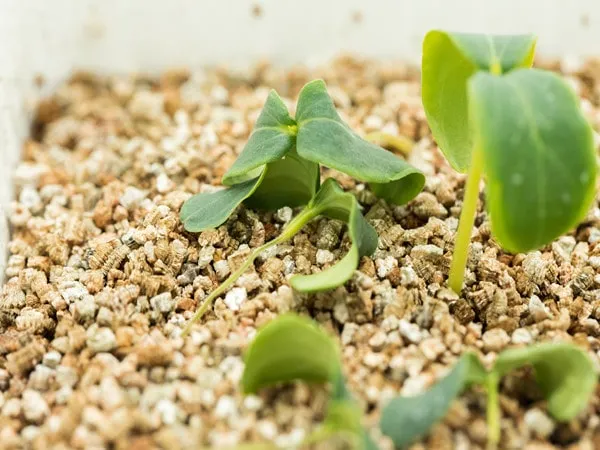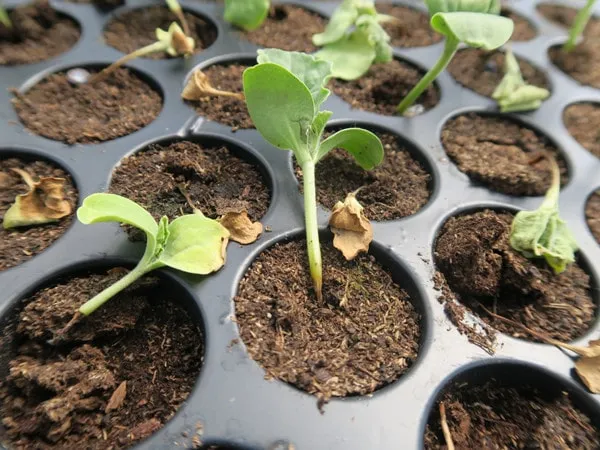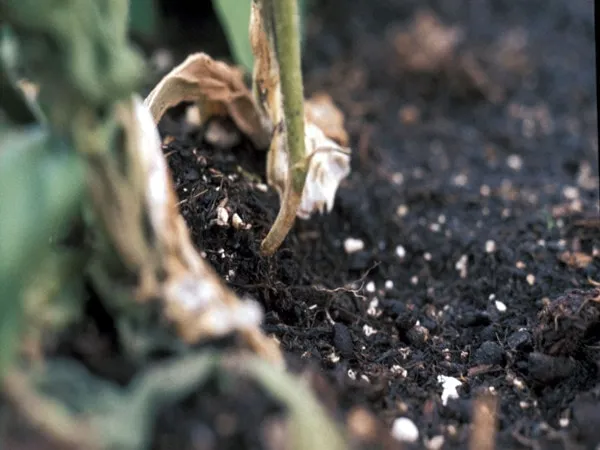What is meant by the term “onion seedlings damping off disease,” and why may gardeners be concerned about it?There is a group of fungal infections that are known as damping off in plants. These diseases affect seeds and damping off seedlings, causing them to rot at the soil line and eventually collapse. Because it can kill a huge number of seedlings rot in a very short period of time, this disease is a matter for concern because it has the potential to have a devastating effect on plantings in both very modest personal gardens and big agricultural settings.

Methods for Recognizing the Initial Indications of Damping Off in Seedlings
The management of damping off relies heavily on early detection. It is important for gardeners to keep an eye out for seedlings that do not emerge or seedlings that appear healthy one day but then abruptly droop or collapse.
High humidity, poor air circulation, overwatering, and contaminated soil or containers are significant factors that contribute to damping off in plants. Understanding these conditions helps in creating preventive strategies to protect seedlings from this destructive disease.
Damping off fungi, such as Pythium, Fusarium, and Rhizoctonia, thrive in moist environments. High humidity levels create an ideal breeding ground for these pathogens, making it easier for them to infect vulnerable seedlings. Maintaining a lower humidity level around seedlings can help prevent the disease. This can be achieved by using a dehumidifier or ensuring good ventilation in the growing area.
Crowded conditions can lead to poor air circulation, which increases humidity and provides a conducive environment for fungal growth. Seedlings need ample space to ensure air can circulate freely around them. This can be facilitated by proper spacing of plants and using fans to keep the air moving. Good air circulation helps to dry the soil surface quickly, reducing the likelihood of fungal infections.

Overwatering is a common mistake that creates waterlogged conditions in the soil, promoting the growth of damping off in plants pathogens. Seedlings should be watered carefully, ensuring the soil pathogen remains moist but not soggy. Watering from the bottom, where water is added to a tray and absorbed by the soil through drainage holes, can help keep the surface dry and less hospitable to fungi.
Using unsterilized soil or containers can introduce damping off pathogens to seedlings. Soil from the garden may contain fungal spores that can infect seedlings. It’s crucial to use a sterile potting mix and clean containers to prevent contamination. Sterilizing soil can be done by baking it in the oven or microwaving it to kill any pathogens. Containers should be cleaned with a bleach solution before planting.
Crowded seedlings are more susceptible to damping off in plants due to poor air circulation and increased humidity around the plants. Stagnant air conditions can be avoided by spacing seedlings adequately and ensuring good ventilation. Using a fan to circulate air around the plants can help reduce humidity and the risk of fungal infections.
One of the most effective strategies to prevent damping off is to use sterile, well-draining soil mixes. Sterile soil ensures that no pathogens are present when planting, reducing the risk of infection. Soil can be sterilized by baking it in the sun, using an oven, or microwaving it. Baking soil in the sun is a traditional method where soil is spread out and covered with clear plastic to trap heat, effectively killing pathogens. In an oven, soil can be heated at 180-200°F for about 30 minutes. Microwaving soil involves placing it in a microwave-safe container and heating it on high for 8-10 minutes, which kills most soil-borne pathogens
Before planting, it’s crucial to disinfect pots and tools to eliminate any lingering pathogens that could infect seedlings. This can be done by soaking pots and tools in a bleach solution (one part bleach to nine parts water) for at least 10 minutes. Rinse thoroughly with clean water before use. This step ensures that all equipment used in planting is free from contamination, significantly reducing the risk of damping off.
Proper seed spacing is vital to prevent damping off in plants. Crowded seedlings can create humid conditions and poor air circulation, both of which are favorable for fungal growth. By spacing seeds adequately, each seedling gets enough room to grow and air can circulate freely, reducing humidity levels around the plants. This practice helps keep the seedlings dry and less susceptible to fungal infections.
If you are wondering as how to control damping off, keep reading the article further.
Proper seed spacing ensures better air circulation around the seedlings, which helps to reduce humidity. High humidity levels can create a conducive environment for fungal pathogens that cause damping off. By spacing seedlings adequately, gardeners can prevent the overcrowded conditions that lead to poor air circulation. Using a fan to improve air circulation further reduces humidity and the risk of fungal diseases.
Watering seedlings from below is an effective technique to prevent damping off. This method involves adding water to a tray or saucer beneath the pots, allowing the soil to absorb moisture from the bottom up. This keeps the surface of the soil dry, making it less hospitable to damping off pathogens. It also ensures that the roots receive adequate moisture without over-wetting the soil surface.

Using pots with drainage holes is essential for preventing water from accumulating in the soil, which can create conditions favorable for damping off. Good drainage ensures that excess water can escape, preventing the soil from becoming waterlogged. This helps maintain an optimal moisture level in the soil, reducing the risk of fungal growth.
Overwatering is a common cause of damping off, as it creates overly moist conditions that promote fungal growth. Gardeners should water seedlings carefully, ensuring the soil is moist but not soggy. Checking the soil moisture before watering and adjusting the watering schedule based on the plant’s needs can prevent overwatering. It’s also helpful to allow the soil to dry out slightly between watering sessions.
By following these strategies for soil preparation, seed damping off disease treatment, and proper watering techniques, gardeners can create an environment that minimizes the risk of damping off, ensuring healthy growth for their seedlings.
Neem oil is a natural antifungal agent that can be used to protect seedlings from damping off. It works by disrupting the life cycle of the pathogens and preventing them from infecting the plants. To use neem oil, mix it with water according to the instructions on the product label and spray it on the soil and seedlings. Regular applications can help keep damping off in plants fungi at bay.
Cinnamon has antifungal properties that make it effective against damping off. Sprinkling a light dusting of cinnamon on the soil surface around seedlings can inhibit fungal growth. Cinnamon works by creating an inhospitable environment for the pathogens, thereby preventing infection. It is a simple, cost-effective method that many gardeners find useful.
Chamomile tea contains natural compounds that have antifungal properties. To use chamomile tea, brew a strong tea, let it cool, and use it to water or mist the seedlings. The antifungal agents in the tea help protect the seedlings from damping off by suppressing the growth of harmful fungi.
Trichoderma is a beneficial fungus that can outcompete damping off pathogens for space and nutrients in the soil. Introducing Trichoderma to the soil creates a protective barrier around the seedlings. This biocontrol method is effective because Trichoderma colonizes the root zone, providing long-term protection against damping off fungi.
Compost teas are rich in beneficial microorganisms that can suppress damping off pathogens. To make compost tea, steep compost in water for several days, then strain the liquid and use it to water the seedlings. The beneficial microbes in the tea help create a healthy soil environment that is less conducive to fungal growth.
Garlic has natural antifungal properties that can help prevent damping off. To make a garlic extract, crush several cloves of garlic and steep them in water. Strain the mixture and use the garlic-infused water to mist the seedlings. The antifungal compounds in garlic help protect the seedlings by inhibiting the growth of damping off pathogens.
If damping off is detected, applying a fungicide promptly can help control the spread of the disease. It is crucial to act quickly as damping off progresses rapidly. Fungicides should be applied according to the manufacturer’s instructions to ensure effectiveness and safety.
In areas prone to damping off, fungicides can be used as a preventive measure. This involves treating the soil and seedlings before any signs of disease appear. Preventive applications create a protective barrier that can prevent the pathogens from infecting the seedlings.
When using fungicides on edible plants, it is essential to choose products labeled safe for food crops. Always follow the safety guidelines provided by the manufacturer, including any waiting periods before harvesting. This ensures that the produce remains safe for consumption.
Fungicidal treatment can be effective, they should be considered a last resort. The focus should be on prevention through good cultural practices and organic remedies. Over-reliance on chemical fungicides can lead to resistance in pathogens and may have negative environmental impacts.
By implementing these organic remedies and following safe fungicide practices, gardeners can effectively manage and prevent damping off, ensuring healthy growth for their seedlings.
Horticulturists emphasize the importance of maintaining rigorous hygiene to prevent damping off. This includes sterilizing all pots, trays, and tools before use. Using a bleach solution (one part bleach to nine parts water) to clean these items can effectively kill any lingering pathogens. It’s also important to handle seeds and seedlings with clean hands or gloves to prevent contamination.
Using sterile growing mediums is critical in preventing damping off disease. Garden soil often contains various pathogens that can cause this disease. Instead, use a sterile, well-draining potting mix. Sterilizing soil can be done by baking it in the oven or using a microwave, as these methods effectively kill harmful fungi and bacteria.
Proper watering is crucial to managing damping off. Overwatering creates a damp environment that encourages fungal growth. Experts recommend watering seedlings from below to keep the soil surface dry. This method involves placing pots in a tray of water and allowing the soil to absorb moisture through the drainage holes. Additionally, allowing the soil to dry slightly between waterings can help prevent the disease.
Experienced gardeners often rely on homemade remedies to combat damping off. For example, sprinkling cinnamon on the soil surface around seedlings can help prevent fungal growth due to its natural antifungal properties. Similarly, using a chamomile tea solution to water or mist seedlings can provide a protective barrier against pathogens.
Quickly removing and disposing of affected seedlings is crucial to prevent the spread of damping off disease. Gardeners recommend monitoring seedlings closely and acting immediately if any signs of damping off are observed. Isolating healthy seedlings from infected ones and improving air circulation around them can help prevent further infection.
By integrating the advice from horticulturists and practical tips from experienced gardeners, you can effectively manage and prevent damping off disease. Creating a sterile, well-ventilated growing environment and using preventive measures can ensure your seedlings grow healthy and strong, leading to a thriving garden.
Cutworms in gardens are a major menace to all..
As a farmer,I inspect my fields daily to monitor..
It all started with a worried farmer named Mr...

Leave a Reply